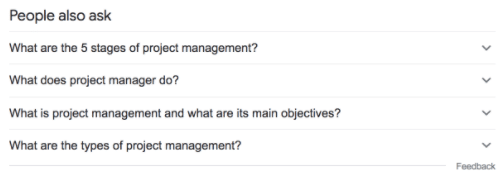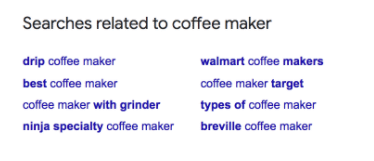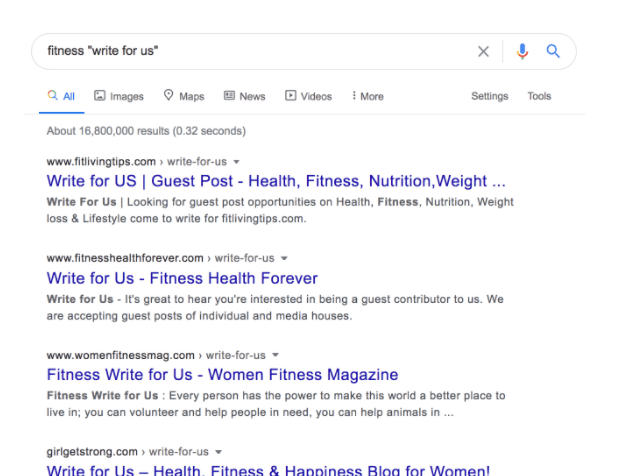If you own a small business, then you know that a strong online presence is a must.
More than half of shoppers have used Google to discover or find a new brand. By ranking in the search results, you can engage your target audience and generate more sales.
But the digital landscape is more competitive than ever. Just having a website isn’t enough to ensure your audience can find you on Google.
So, how can you increase your search engine rankings?
Keep reading because you’re in the right place. Here we’ll look at proven tips that you can implement to help your small business rank higher in the search results.
1. Optimize On-Page SEO
On-page SEO is the process of optimizing individual elements on a page. It remains one of the most effective ways to increase your search engine rankings.
If you haven’t already, use tools like Google’s Keyword Planner to identify search terms that your audience is looking for regularly.
Then, optimize the following on-page factors for your target keyword:
- Title tags
- Heading tags
- Meta descriptions
- Image ALT text
- URLs
Be sure to also include your target keywords throughout the content. But don’t go overboard here as spamming your content with keywords could get your site hit with a ranking penalty.
Have a look at the following homepage for LFA Capsule Fillers as an example of what you should be doing.
The page title and other on-page factors are optimized for the keyword “capsule fillers.” Using relevant keywords also helps this site rank higher.
Similarly, you’ll want to optimize all on-page factors for every page of your site to improve its overall relevance.
2. Publish Engaging Content
Having a good blog is essential to ranking high in the SERPs. Check out this list of the best sales blogs as an example of blogs that hit the mark.
Google strives to deliver relevant results to its searchers. Publishing engaging content and optimizing those posts increases your visibility in the search results. It also helps your site get found for even more keywords.
But, if you want to rank on the first page of Google, you need to create content that’s worth ranking. That means you need to go above and beyond to ensure that your content delivers value.
As an example, Propel PLM published an in-depth blog post on product lifecycle management and ranks on the first page of Google as a result.
What should you write about? Start by identifying the questions that your target audience is asking. Use question and answer sites like Quora. You can also type in any keyword into Google and look at the “People also ask” section for additional ideas.
Here’s an example of questions we get for the term “project management.”
Once you have some ideas, get started on creating your content. Aim to make it as in-depth as possible and optimize all on-page factors before you hit the publish button.
3. Add LSI Keywords to Your Pages
You can improve your site’s relevance and rank for even more keywords by adding LSI (Latent Semantic Indexing) keywords to your content.
LSI keywords are terms and phrases that are semantically related to the topic at hand. They help Google understand the context of a page.
For example, let’s say that you have a page on the company Apple. If Google sees keywords like “iPhone” and “gadget,” it knows you’re talking about the technology company and not the fruit.
To find LSI keywords, simply search for your keywords and scroll to the bottom of the results.
You can also simply click through some of the top results and note down any common keywords or phrases that you see.
Don’t forget to also add keywords that your target audience is likely to search for. For example, this blog post on the best gifts for grandchildren includes keywords like “financial investment” and “savings.”
4. Refresh Existing Content
Google considers freshness into its ranking algorithm. This makes sense — depending on what you’re searching for, chances are you want information that’s relevant today.
Even if you have well-written content on your site, its rankings can start to gradually slip over time. Other pages may eventually outrank you simply because they’re more recent.
Refresh existing articles with SEO content to help them rank higher in search engines. Start with content that’s ranking at the bottom of the first or second pages of Google. All they need is a nudge to get them ranking at the top again.
Go through that content and make it even better. Some ways to do that include updating any old statistics, adding multimedia like images, optimizing for additional keywords, and adding new sections.
5. Guest Post on Other Blogs
Guest blogging or guest posting is the process of publishing content on other blogs.
This is beneficial for two major reasons.
- Generates referral traffic: Publishing content on a well-known site in your industry can help you reach a new audience and drive referral traffic to your site. The traffic you generate can then help you generate more leads.
- Boosts your link building efforts: Backlinks continue to be a key ranking signal in Google’s algorithm. Guest posting helps with your link building efforts as you’re getting a link back from an established site. This builds your authority in the process.
To get started, simply search for your main keyword and append “write for us” to your query.
These are all sites that you can reach out to and submit content. Just be sure to read all guest blogging guidelines to increase your chances of getting your content submitted.
6. Build Backlinks to Your Site
We touched on this in the previous section, but it’s worth mentioning again. Backlinks continue to be one of the most important ranking signals in Google.
Backlinks from other sites are essentially like a vote of confidence. The more you have, the better as they signal to search engines that others are vouching for you.
To increase your search engine rankings and drive more traffic to your product pages, building backlinks to your site needs to be more of a priority.
Here are some strategies you can implement to build backlinks:
- Conduct Outreach: This involves reaching out to other sites in your industry and requesting that they link back to you.
- Repurpose Content: One way to generate more links and improve your rankings is to repurpose your content into different formats For example, you can turn a single blog post into YouTube videos, social media posts, infographics, etc. Have a content marketing strategy to optimize your content planning, delivery, and distribution.
- Search for Resource Pages: Resource pages provide helpful information about a specific topic. These pages are another good way to get quality backlinks to your site. Reach out and request that they include a link to your site.
- Claim Unlinked Mentions: Sometimes a website will mention your brand or the products you sell, but not link back. Search for your brand name and look for instances of unlinked mentions. Then, simply request that they add a link.
- Research Your Competitors: Analyze your competitors’ link profiles and aim to replicate the links they have.
Building backlinks is a rather tedious and time-consuming activity. Use free link building tools to manage your outreach efforts and step up your link building game.
7. Track Your Rankings
If you implement the tips outlined here, then your rankings should start to improve. You should also see more organic traffic to your site as a result.
But it can take weeks or even longer for your rankings to improve. So, how do you know if your efforts are working?
Use SEO software that comes with a rank tracker. Monitoring your rankings is helpful because you can see where your site is currently ranking and measure the impact of your link building efforts.
Wrapping Up
Google is by far the most popular search engine. By ranking for your target keywords, you can position your products or services in front of your target audience.
Follow the strategies as laid out here to generate more traffic from Google. Optimize all on-page factors, publish engaging content, guest post on other sites, and build links to your pages. And don’t forget to track your rankings over time.







